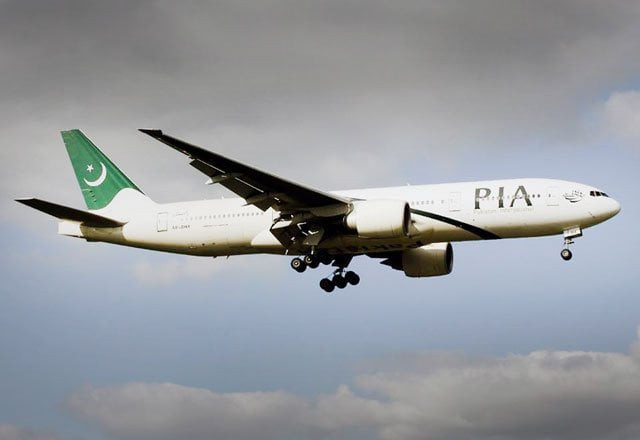Govt plans to enhance regional air connectivity
Closed airports to be made operational; Pakistan Airways will be reactivated

The government has started working on a comprehensive plan for the operationalisation of long-closed airports on a commercial basis, finalising its framework.
According to documents available with The Express Tribune, under the project, regional connectivity will be promoted, closed airports will be made operational, and Pakistan Airways will be reactivated.
A framework for regional connectivity was finalised at the domestic level. The national airline will also be able to enter into a joint venture with any foreign company. For this purpose, Pakistan Airways, a subsidiary of the PIA, can also be activated, which will operate as a regional airline.
The objective of this project is to make air travel accessible to all Pakistanis, besides repurposing the civil aviation assets worth billions of dollars, including airports that are lying idle. This includes creating employment opportunities and enhancing technical capabilities by connecting local people to the aviation industry.
Read more: Turkish Airlines to expand operations in Pakistan
According to the plan, this work is expected to increase the annual gross national product by $500 to $600 million. According to the document, small charter aircraft with 20 or fewer seats will operate flights from all airports across the country and under regional connectivity.
Regular flights will be operated between Karachi, Turbat, Gwadar, Quetta, Larkana, Sukkur, Lahore, Peshawar, Chitral, Mianwali, Sialkot, Faisalabad, Rahim Yar Khan and Islamabad.
According to the working paper, in a country like Pakistan with a population of 220 million, there are only 50 commercial aircraft, which are insufficient to provide travel facilities to the large population of the country.
If it is compared with other countries, there are 700 commercial planes in Turkey with a population of eight million, around 500 in Malaysia with a population of 3.28 million, and 250 commercial planes are providing travel facilities in contrast to the neighbouring country of Iran with a population of 8.8 million.
It is also worth mentioning here that Iran has been suffering from international sanctions for the last several decades and modern aircraft and spares are beyond their reach.
According to the document, although Pakistan's road and rail infrastructure is well-developed, despite having airports in all major cities, a few major cities and particularly secondary points, or between the CPEC routes, are serviced by air. Contact is very rare.
The average travel distance between Lahore to Islamabad, Peshawar to Quetta, Quetta to Gwadar, Turbat or Karachi to Thar/Larkana is between 300-700 kilometres.
It takes seven to 15 hours by road and the journey is not only inconvenient due to its long duration but has also become very expensive due to the recent increase in fuel prices.
According to the document, out of 42 airports in Pakistan, 27 airports are active, including 12 international and 15 domestic. Out of these 27 airports, only 15 airports are operating scheduled flights. Out of 10 major cities of Pakistan, only five cities are connected by air.
A city like Sialkot, which has its own airline as well, does not have regular air connectivity with Karachi or other cities of the country.
According to aviation experts, there is room for improvement in the basic features of civil aviation laws and policies in Pakistan so that regional aviation can also be promoted.
Pakistan's aviation policy provides a lot of facilities to foreign airlines, which makes it easy for them to access the local market and benefits the Gulf carriers but is not suitable for the local industry.
In the last decade alone, several local airlines launched operations but soon had to shut down due to unfavourable company conditions. After getting the licence, all the airlines want to operate flights only on Karachi, Lahore and Islamabad routes and completely ignore the regional operation due to the lack of law.
According to experts, the rules for general aviation (20 seats or less) are not favourable at all and only one company is TPR licenced and that too is limited to charters in the oil and gas sector.
In this regard, when the PIA spokesperson was contacted, he said that the government of Pakistan is considering some recommendations to improve regional connectivity in this regard.
Federal Aviation Minister Khawaja Saad Rafique has also expressed his opinion many times in this regard, saying that this is the need of the hour.
The share of civil aviation in the country's economy is very low compared to other countries in the region. The PIA is the only airline that has access to most destinations in the country in national interest. But to increase the regular flights and frequency, it will need small and suitable aircraft which the government of Pakistan will try to get in the light of the guidelines and the plan formulated.



















COMMENTS
Comments are moderated and generally will be posted if they are on-topic and not abusive.
For more information, please see our Comments FAQ